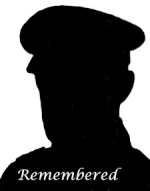
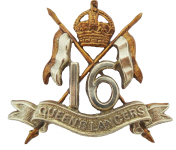
Aged 27

Lieutenant, 16th (The Queen's) Lancers
Killed in Action on Sunday, 21st February 1915


Aged 27

Lieutenant, 16th (The Queen's) Lancers
Killed in Action on Sunday, 21st February 1915
|
Nathaniel Walter Ryder KING was born in Hamptead, London (Hampstead Q2-1887 1A:659) eldest son of Henry James and Maud Harriet KING (née RYDER).
1891 census...Aged 3, he was at Marathon House, Paddington with his father H.J.KING [41] merchant, born America; mother Maud H [36] born America; sister Gladys R [2] and brother Herbert A.[1], both born in Kimberley, South Africa. Also visitors, Sarah A. Bennington [18] and widow Hope J Vulery from London and nine servants. 1901 census...Aged 13 he was a pupil at Eton College. his parents were still at 138 Piccadilly with his sister Gladys and twin sisters Muriel and Audrey [9] born Bayswater. The staff had grown to 23 servants. Brother Herbert was at Manor House School, Cheam. 1911 census...In this census the schedule has him at Graham House, Newmarket, the actual form, at 138 Piccadilly, London, aged 23, a retired Army officer with 7 servants. His father purchased Graham House and Graham Place in 1902 and built a new Graham House in 1903. Although his parents died in Hertfordshire, their remains were removed, to be buried in Newmarket and his brother Herbert became a prominent figure in Newmarket. With this class of family is it always difficult to establish which of their houses the family members counted as their main residence. In the history of Poles near Ware, Hertfordshire, it is recorded that in 1913 the next owner, Henry James King was a diamond merchant from South Africa . He built new stables for his racehorses and had a nine-hole golf course laid out in the park. The well known golfer, Harry Vardon, designed it. The Kings' eldest son was killed in the 1914 war (Nathaniel of course). Henry King died in 1920. The family continued to live at Poles until 1921 when another tragedy occurred. One of the daughters, Muriel, was working with bees in the garden when her veil caught fire. A week later she died of her burns. Mrs King felt that she could no longer live at Poles and the house was put on the market. It remained empty for two years. This indicates that Nathaniel was unlikely to have called the manor near Ware his home, but was sharing his home time between Paddington and Newmarket. After his brother Herbert settled full time in Newmarket his father and sister Muriel were exhumed in Ware and re-interred in Newmarket cemetery. |

|
He was commissioned into the 16th Lancers on 17th October 1906, promoted to Lieutenant on 3rd July 1907. When his father claimed for his 1914 Star (all officers campaign medals had to be claimed) it seems he was either unaware of the clasp or that Nathaniel did not qualify, despite being in France by September 1914. Apparently he was killed in the same action as Trooper Charlie Alderson. see here The 21st was an unusually disastrous day for the Regiment. The 16th Lancers were holding the line north of Klein Zillebeke on the edge of Shrewsbury Forest. The enemy's trenches ran parallel to those of the 16th at a distance varying from 15 to 50 yards only. In front of the right of D Squadron was a deep ditch which ran from the German trench to that occupied by the Squadron. It had been suspected for some days that the enemy was running a sap at the bottom of this ditch, and a close observation had been kept on it, but no sign of anything of the sort had been discovered. It turned out afterwards that the enemy had really run a sap half way down it, but had turned off at a sharp angle and continued the sap underground until it ran under the centre of the trench of D Squadron, and that three mines had been placed at the end of it. It was afterwards ascertained from prisoners that the mines had been laid some days before the 16th took over the trench, but that the explosion had been delayed with the intention of catching the relief when they were taking over on the 18th, but the opportunity had fortunately been missed. At 6 a.m. on the 21st one mine was fired, followed immediately afterwards by the other two, with the result that the trench was completely destroyed. From the war diary it appears that Lt King was one of the officers killed in this explosion. The enemy followed this up with a strong attack on the trenches on each side of that held by D Squadron. There was of course much confusion and a hand to hand combat, in which the enemy was finally driven back by A Squadron and the reserve troop of D with a machine gun. A counter-attack was made by the three reserve troops. They were unable to regain the lost trench, and a request for help was sent to two companies of French Infantry which were in support of the left section of the trench, but these refused to move without orders from their own commanding officer A counter attack was not made until 9 a.m., when the line was reinforced by a squadron of the 20th Hussars and another Company of French infantry from the supporting line. The French were stopped at once by the heavy fire they were met with, all their officers and half their men being shot down in a few minutes. The 2Oth got a little further when they were brought up by an enfilade fire and the attack was broken off. No further attempt was made to regain the lost trench, but a new one was dug in rear of it. This was the worst day the 16th had during the whole of the war. When the roll was called it was found that 5 officers and 7 men were killed, an officer and 29 men wounded. In addition 1 officer and 11 men were missing. |
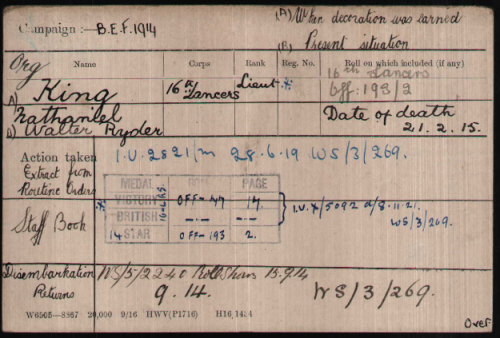
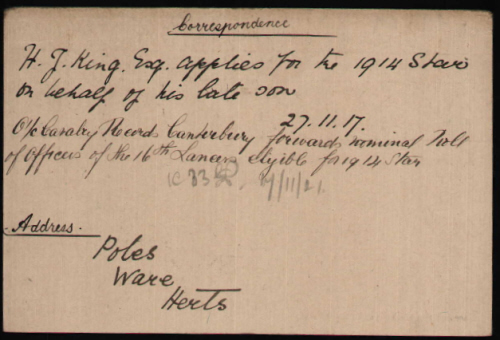
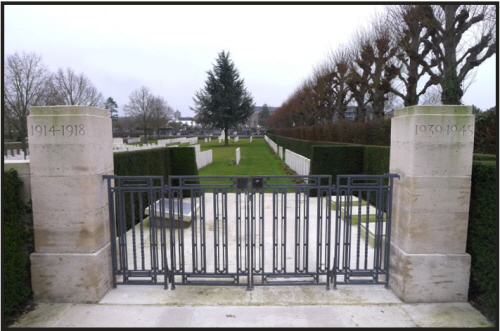
photo: Rodney Gibson
click here to go to the Commonwealth War Graves Commission website for full cemetery/memorial details